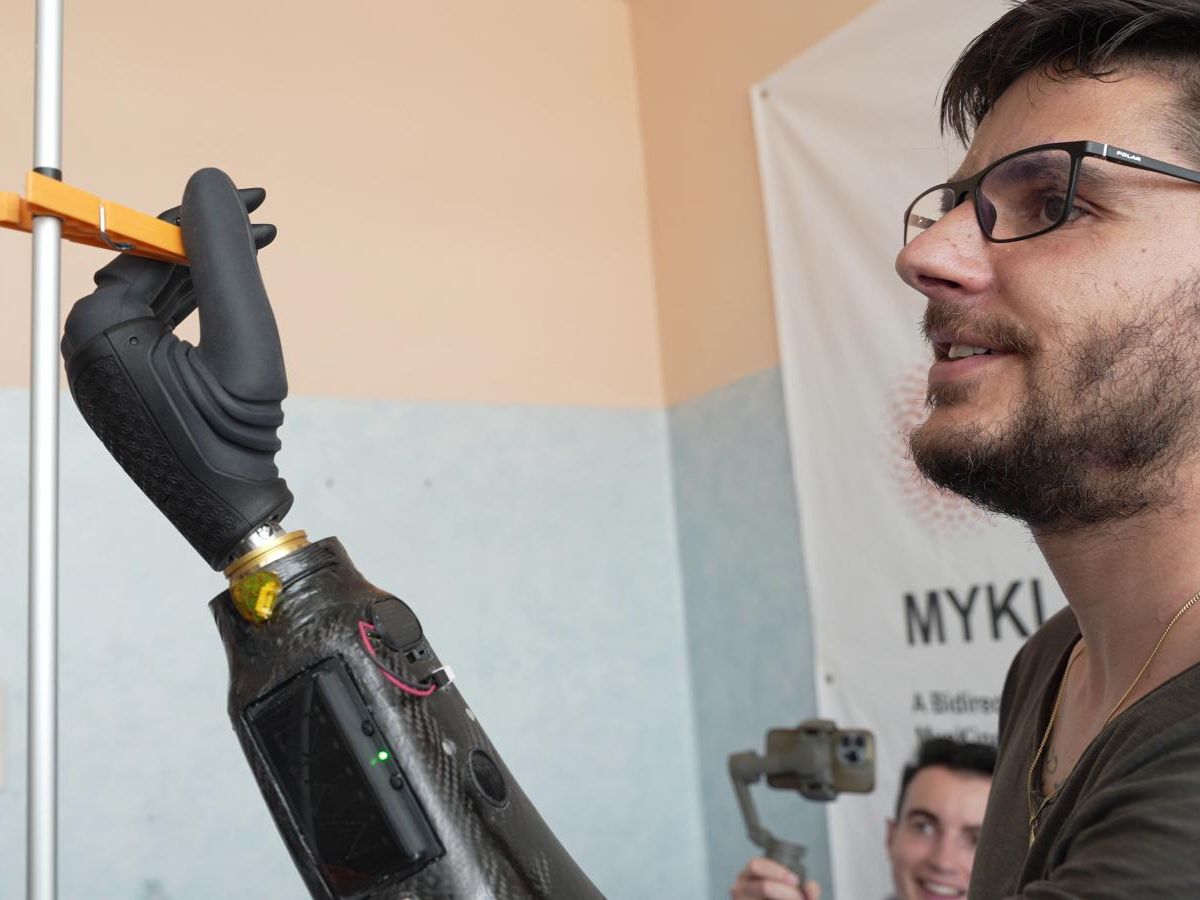He can cut his food with a knife, do up a zipper, use a screwdriver, and even tie his shoelaces. However, in September 2022, Daniel, a 32-year-old Italian man, lost his left hand. In April 2023, he became the first in the world to benefit from a completely new kind of prosthesis. Without electrodes or other more invasive technology, this prosthetic hand works only with magnets implanted under the skin. An experiment conducted by the Institute BioRobotics from Pisa in Italy and described in the journal Science Robotics.
Read alsoBetter support for prostheses thanks to skin grafts becomes possible
Daniel was able to benefit from this prosthesis because he said he still felt the phantom presence of his hand and because the residual muscles in his arm responded well to movements dictated by his brain. Six tiny magnets, about a millimeter in size, were implanted into the residual muscles through a minimally invasive procedure in April 2023 at the University Hospital of Pisa, Italy. For six weeks, the young man was able to test and get used to his new hand.
Daniel, 34, pours himself a glass of water using his magnetic prosthetic hand. Photo credit: BioRobotics
A natural and intuitive movement
Of the twenty or so muscles in the forearm, the vast majority control hand movements. Many people who have lost a hand continue to feel it as if it were still in place. This explains the movements of the residual muscles, in response to commands from the brain." explains Professor Christian Cipriani, director of the BioRobotics Institute in Pisa.
But identifying these residual muscles is a real challenge. It was necessary to understand which ones had not been amputated and were still functioning in the limb, using MRI and electromyography.
Due to scarring and fibrosis, some tissues required surgery to prepare them for magnet grafting. To facilitate the connection between these magnets implanted in the arm and the hand prosthesis, an electronic system capable of locating their movements was installed in the prosthesis.
The prosthesis is made of carbon fiber, a material that is both strong and lightweight.
With this prosthesis, when the muscle contracts, the magnets move under the skin, and it is this movement that controls the carbon fiber limb. On the other hand, sensors integrated into the prosthesis recognize the magnetic field produced by the magnets. Using this data, the prosthesis records the contraction of the stump muscles, understands the user's intentions, and allows the artificial hand to move naturally and intuitively.
The carbon fiber prosthesis shaking a hand. Photo credit: BioRobotics
No cables or wires
Currently, the most advanced technologies called " bionic arms » work thanks to myoelectric prostheses, whose electrodes capture the patient's movements.
Professor Cipriani's team in Pisa has opted for lighter technology. "The myokenitic interface has the advantage of controlling several muscles at the same time and activating them simultaneously. The number of movements that the prosthesis can recognize is considerably greater than with a myoelectric prosthesis. The latter only recognizes a few signals on the surface of the muscle and can only trigger two movements."“, explains Science and Future Martha Gherardini, post-doc in the BioRobotics team and first author of the study in Science Robotics. “ Other types of current prosthetics measure the electrical activity of muscles using myoelectric sensors. In comparison, magnets have the advantage of being 'passive' elements that do not require wireless technology or percutaneous cables [under the skin].", continues the researcher. Less invasive, this promising technique should help reduce mechanical problems as well as infections on the limb.
And the bet seems to have paid off for everyday gestures. I suddenly found myself with only one hand. But this system allows me to return to lost sensations and emotions. It's as if I were moving my own hand.", the patient said in a press release.
After this first experiment, the team would now like to test this new technology on other types of amputation, in order to see if the prostheses still respond as well.




